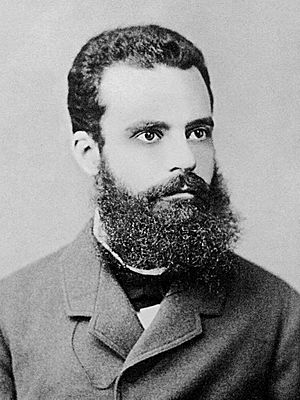Welfare economics facts for kids
Welfare economics is a part of economics that looks at how a society uses its resources. It uses ideas from microeconomics to figure out how well people are doing overall. The main goal is to find the best and fairest ways to share things like jobs, goods, and services within an economy. It focuses on the total well-being of everyone in a society, considering what individuals do.
This field often tries to make society better by improving what's called "Pareto efficiency". Imagine two ways a society could be set up, A and B. If at least one person prefers B over A, and no one is worse off in B, then B is considered "better" in terms of Pareto efficiency. Welfare economics also looks at how income and goods are shared, including how fair or equal that sharing is.
Contents
What is Welfare Economics?
Welfare economics is like a special branch of economics that asks big questions. It wants to know how we can use our limited resources to make everyone in a society as well off as possible. It tries to find the best ways to organize an economy so that people are happy and resources are used wisely.
Making Society Better Off
The main idea behind welfare economics is "social welfare". This means the overall well-being of everyone in a society. It's not about one person's happiness, but about the happiness and well-being of the whole group. Welfare economics believes that the well-being of a society comes from the well-being of all the individuals in it.
One way to think about making society better off is through economic efficiency. This means using resources in a way that creates the most value without wasting anything. For example, if a factory can make more toys with the same amount of materials, that's more efficient.
How Do We Measure Welfare?
Measuring how "well off" a society is can be tricky. One important idea is Pareto efficiency.
Understanding Pareto Efficiency
Imagine a group of friends sharing a pizza. If you can give one friend more pizza without taking any away from another friend, that's a "Pareto improvement." Once no one can get more pizza without someone else getting less, you've reached a "Pareto efficient" state. In economics, it means you've used resources so well that you can't make anyone better off without making someone else worse off.
Other Ways to Measure
Sometimes, economists try to measure welfare using money. For example, they might use a method called Cost–benefit analysis. This looks at the costs and benefits of a project or policy in terms of money. If the benefits are much higher than the costs, it might be a good idea for society.
Important Ideas in Welfare Economics
Welfare economics also looks at other important ideas that affect how well a society is doing.
Fairness and Equality
One key idea is equity or equality. This means looking at how fairly resources, income, and opportunities are shared among people. Welfare economics explores if everyone has a fair chance and if the differences between people's wealth are too big.
Freedom and Capabilities
Another idea is the "capabilities approach". This suggests that a society's well-being should also include how much freedom people have. It asks what people are truly free to do or be. For example, can everyone get an education? Can everyone access healthcare? This idea has been very important in creating things like the Human Development Index, which measures a country's progress not just by money, but also by health and education.
Externalities
Sometimes, economic activities have effects on people who aren't directly involved. These are called externalities. For example, pollution from a factory is a negative externality because it harms people living nearby, even if they don't buy the factory's products. Welfare economics tries to understand and deal with these effects to improve overall well-being.
See also
 In Spanish: Economía del bienestar para niños
In Spanish: Economía del bienestar para niños


